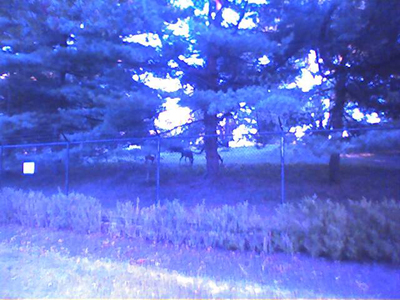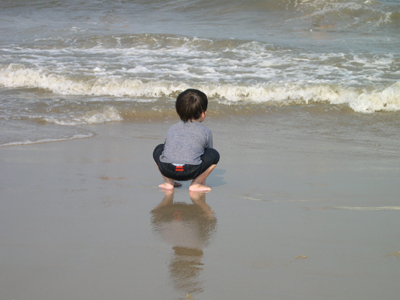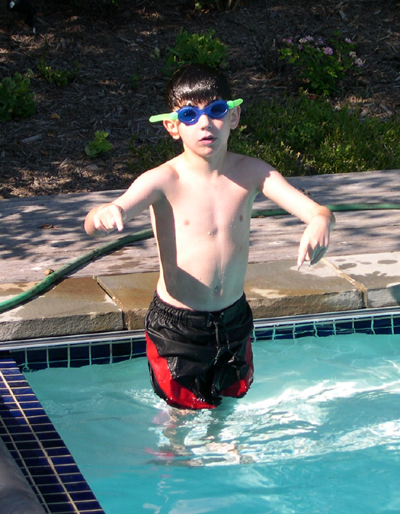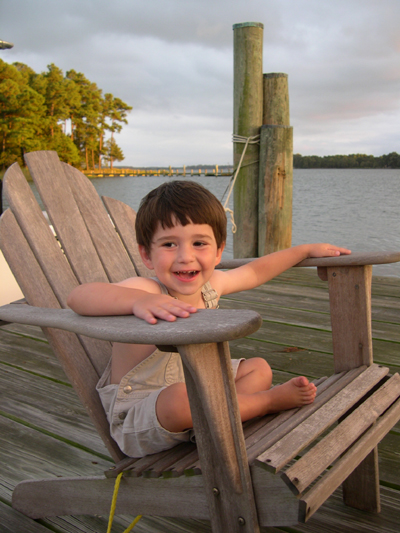
I read this story and it made me wonder if what the man in the last paragraph is talking about comes from one of the embryos we donated for research. I think it might not be because this sounds like it must be Dr. D'Andrea's work and we gave our embryos to Dr. Hughes and Arleen.

Monday, August 09, 2004 5:59 p.m.
By Steve Holland
WASHINGTON (Reuters) - First lady Laura Bush and Democratic vice presidential nominee John Edwards clashed on Monday over whether President Bush's restrictions on stem cell research should be maintained or lifted.
On the third anniversary of Bush's decision to allow stem cell research only on a limited number of embryonic stem cell lines, the Democratic presidential candidate John Kerry is seeking to use the issue to portray Bush as out of touch with mainstream America.
The Kerry campaign got a boost when Ron Reagan, son of the late ex-President Ronald Reagan, who died of Alzheimer's, appeared at the Democratic convention last month and said stem cell research "may be the greatest medical breakthrough in our lifetime" and could help save the lives of millions of people who suffer from diabetes and Alzheimer's.
Laura Bush told the Pennsylvania Medical Society in Langhorne, Pennsylvania, that Bush's policy "makes it possible for researchers to explore the potential of stem cells, while respecting the ethical and moral implications associated with this research."
She said embryonic stem cell research is "very preliminary right now, and the implication that cures for Alzheimer's are around the corner is just not right."
"And it's really not fair to the people who are watching a loved one suffer with this," she said, noting her father died of Alzheimer's.
Edwards, in a conference call with reporters, vowed that a Kerry administration would reverse Bush's policy and expand stem cell research if elected.
"We have a plan to have groundbreaking stem cell research done that can affect millions of Americans. They are blocking that research," Edwards said.
He said Kerry would increase stem cell research funding from $25 million to $100 million, with the possibility of much more.
Embryonic stem cells, taken from days-old human embryos, have the potential to form any kind of tissue in the body. Researchers hope to learn to use them to create tailor-made transplants to treat Alzheimer's, Parkinson's and other ills.
On Aug. 9, 2001, Bush restricted the use of federal funds for embryonic stem cell research to batches, called cell lines, that existed at that time. He went no further out of ethical concerns over creating embryos that would be then destroyed to harvest the stem cells.
"It's important that we not go down a dangerous, slippery slope where we divorce ethics from science," said White House spokesman Scott McClellan.
A Roman Catholic, Kerry disputed the idea his belief that life begins at conception was incompatible with his support of embryonic stem cell research.
"It is entirely within ethical bounds to do embryonic stem cell research without violating one's beliefs at all about what life is or where it is and what matters," he told reporters at the Grand Canyon in Arizona.
"I think you have to measure it also against the lives you save, against the diseases that you're curing," he said.
A New England Journal of Medicine review said the Bush policy was leading to missed opportunities.
George Q. Daley, a physician at the Children's Hospital and Harvard Medical School in Boston, said he has access to a stem cell line ineligible for federal research grant money because it was produced after Bush's policy announcement.
The line holds promise for making advances against a gene defect known as Fanconi's anemia, "but the President's policy prohibits us from using our federal grants to pursue these avenues."
This news story also made me think about a letter that I wrote to President Bush that appeared in the newspaper. The people at the newspaper asked me to take out some of the stuff I wrote about the President's sister. I am going to look for the original.

July 21, 2001 Saturday
Stem Cell Research and a Parent's Hopes
By Allen Goldberg
In October my wife, Laurie, and I will have our third child. Even though all three were conceived naturally, we have about 60 embryos frozen and in storage, courtesy of nine cycles of in vitro fertilization. As far as we know, ours may well be the largest personal cache of embryos anywhere. As we told The New York Times Magazine for an article that was published July 1, we had attempted in vitro fertilization because we were trying to have a child who was free of Fanconi anemia, the deadly genetic disease we had passed to our first son, Henry. The child also had to have the right combination of leukocyte antigen proteins to be a perfectly matched stem cell donor for Henry. Otherwise, Henry would need to have a bone-marrow transplant from a donor whose marrow was less likely to be accepted by Henry's fragile system -- a transplant that could have endangered his life.
A bone marrow transplant is a type of stem cell transplant. The donor marrow is dripped into the recipient's bloodstream, which takes the marrow's blood-making, or hematopoietic, stem cells through the patient's body to his or her marrow. If all goes well, these healthy cells will enable the body to replace the diseased marrow and will strengthen the patient's immune system.
Such stem cells can also come from umbilical cords and placentas. Our hope was to have a healthy child, unaffected by Fanconi anemia, whose umbilical cord, after birth, might provide the best stem cells -- matched in terms of tissue proteins with Henry, and so able to give him the best chance for a healthy life.
Thanks to recent scientific advances, we were able to test embryos produced by in vitro fertilization of Laurie's eggs and, after finding the best ones, try to bring one of them to term. We hoped to have another child and also be able to save Henry.
The remarkable science that helped us is called pre-implantation genetic diagnosis. P.G.D. is a godsend to parents like my wife and me who are carriers of genetic disease and want to have healthy children while avoiding any prospect of abortion. Naturally, P.G.D. is only available to us now because of past research performed on human embryos. The application of this science is in its early stages but holds tremendous promise for all children suffering from diseases, like leukemia, that can be treated with stem cell transplants.
Our own efforts at having a child who would also be an ideal stem cell donor were unsuccessful, and Henry's deteriorating health forced us to undertake his transplant one year ago using a less desirable bone marrow donor. Henry is alive today, but clinically he has suffered so much more -- a year in and out of the hospital and invasive lung, brain, liver and skin biopsies -- than if he had had a healthy, genetically matched sibling stem cell donor.
Although time ran out for us, further research on embryos will improve the success rate for all of the families coming after us hoping to use P.G.D. to have healthy children who are also well matched stem cell donors for sick siblings. Fortunately, we are in a position to help.
A final effort to have a child from our embryos failed. We asked the Center for Reproductive Medicine and Infertility at the New York Presbyterian Hospital-Weill Medical College of Cornell University to send us its embryo disposition consent form. The document details three clear choices: donate our embryos to a married couple trying to have children; thaw and dispose; or donate them for research.
Stem cells extracted from embryos may hold the promise of cure for Alzheimer's and Parkinson's diseases and diabetes, and research using embryos will continue to help treat infertility and genetic diseases. We checked the box to donate for research.





































